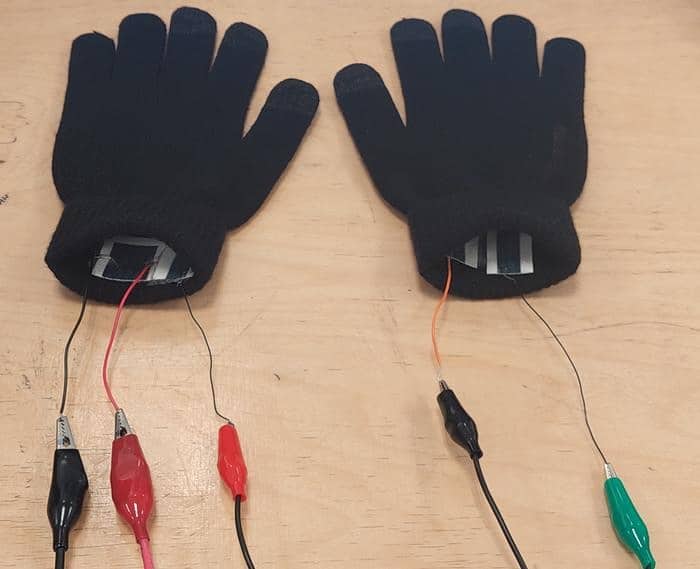This post was originally published on Eco Watch
In a new study, scientists from University of Southampton, University of the West of England Bristol, University of Exeter, University of Cambridge, University of Leeds and University of Bath have developed a way to make smart, electronic textiles that are also sustainable and biodegradable.
The researchers have created ‘Smart, Wearable, and Eco-friendly Electronic Textiles’ (SWEET), technological fabrics with features like sensors or lights that are designed to biodegrade after they reach the end of their lifespan.
“Integrating electrical components into conventional textiles complicates the recycling of the material because it often contains metals, such as silver, that don’t easily biodegrade,” explained Nazmul Karim, lead author of the study and a professor at the Winchester School of Art at University of Southampton. “Our potential ecofriendly approach for selecting sustainable materials and manufacturing overcomes this, enabling the fabric to decompose when it is disposed of.”
To make a biodegradable e-textile, the researchers created a three-layer fabric with a Tencel-fabric base, an interface layer, and the sensor layer. The Tencel is a wood pulp-based fabric, and the team used graphene and a type of conductive polymer known as PEDOT:PSS for the electronic elements.
From there, they were able to use inkjet printing to adhere these materials to the fabric, as this process used less water and energy and produced no material waste, according to the researchers.
The researchers tested the fabric by attaching it to gloves, which five humans wore in the study. The fabric was able to effectively measure the humans’ electrocardiogram (ECG) signals and skin temperature, just like many smart wearables on the market today.
Gloves with swatches of e-textile attached inside and wired for sensing testing. Marzia Dulal
“Achieving reliable, industry-standard monitoring with eco-friendly materials is a significant milestone. It demonstrates that sustainability doesn’t have to come at the cost of functionality, especially in critical applications like healthcare,” Shaila Afroj, a co-author of the study and associate professor of sustainable materials at the University of Exeter, said in a statement.
After testing how the fabric performed in tracking human physiology metrics, the team put SWEET to its bigger test — whether it was biodegradable. The fabric was buried in soil with a 6.5 to 6.8 pH in an incubator with a temperature of around 29 degrees Celsius (84 degrees Fahrenheit) and a relative humidity of around 90%.
After a four-month period, the fabric had a 48% decrease in weight and 98% decrease in strength. The graphene elements also revealed a 40 times smaller impact upon decomposition compared to standard electrodes in wearables. The researchers published their findings in the journal Energy and Environmental Materials.
According to Statista, smart wearable shipments were expected to reach 543 million units worldwide in 2024, and this number is only expected to grow, reaching an estimated 612.5 million units by 2028.
Further, a report by ResearchAndMarkets.com has estimated that the global smart textiles market will increase from $4.85 billion as of 2024 to $29.1 billion by 2033.
With this increasing demand comes the risk of increasing e-waste, or electronic waste. As Earth.org reported, humans currently generate about 50 million to 60 million tons of e-waste per year, and much of this waste does not break down into the soil. Instead, the materials can corrode or react to UV rays and leach harmful substances into the environment. According to the United Nations Institute for Training and Research, e-waste is slated to increase 32% by 2030.
With the growing demand for smart, wearable technology, advancements such as biodegradable electronic textiles will be necessary to meet demand without contributing to more e-waste. The researchers noted that their study can help further additional research into more sustainable, and ultimately fully biodegradable or recyclable, e-textiles and other materials.
“Amid rising pollution from landfill sites, our study helps to address a lack of research in the area of biodegradation of e-textiles,” Karim said. “These materials will become increasingly more important in our lives, particularly in the area of healthcare, so it’s really important we consider how to make them more eco-friendly, both in their manufacturing and disposal.”
The post Scientists Develop Biodegradable E-Textiles appeared first on EcoWatch.





0 Comments